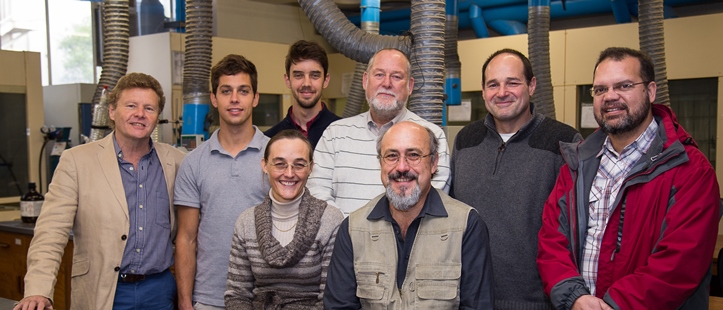Helen Marais is the recipient of the HORTGRO Science/Prof Daan Strydom Award as the best student in horticultural science at Stellenbosch University (SU). This former student of Charlie Hofmeyr High School is the second student in a mere three years from the Ceres area to receive this award. The honour was also bestowed upon Gerrit van der Merwe in 2013. He grew up in the Koue Bokkeveld.
The prestigious award recognises the efforts of the best final year student of the previous year (2014). It is supported by HORTGRO Science, the research arm of South Africa's deciduous fruit industry.
Dr Lynn Hoffman, chairperson of the SU Department of Horticultural Science, describes Marais as a "meticulous student".
"She has excellent technical insights that will stand her in good stead one day," said Dr Hoffman at the award ceremony that took place during HORTGRO Science's annual technical symposium in Simondium.
Marais is humble about her success. "All that is needed is a passion for and an interest in your field of study," she describes the reasons behind her successful academic career.
She has since childhood showed an interest in biology, and especially plants. An inspiring conversation with an alumnus of the SU Department of Horticultural Sciences who also hails from Ceres made her decide to focus her interests and knowledge, and to apply it in a practical way in for instance the fruit industry. Marais subsequently majored in Horticulture and Soil Science.
Marais is currently finding her feet in her first year of MSc Agric studies in Horticultural Sciences. She will research nutritional aspects related to mandarins and other citrus fruits. She will in particular study how nitrogen fertilisation and minerals contribute to the growing of the best possible quality fruit. Her studies, under the guidance of Dr Paul Cronje and Dr Lynn Hoffman of the SU Department of Horticultural Science, are funded by the Citrus Academy.
A career as a technical advisor is a possibility for the future, but Marais is keeping her options open.
"Things can change tremendously in two years, so I prefer to focus on finishing my masters' first. Everything depends on the opportunities that present themselves," she adds.
Photo caption:
Helen Marais is the recipient of the 2014 HORTGRO Science/Prof Daan Strydom Award as the best student in horticultural science at Stellenbosch University. It was presented to her by Stephen Rabe, chair of the HORTGRO Science Advisory Council. Photo: Engela Duvenage
Media enquiries:
Dr. Lynn Hoffman
Department of Horticultural Science, Stellenbosch University
ewh@sun.ac.za
+27 (21) 808 2383
.jpg)

















